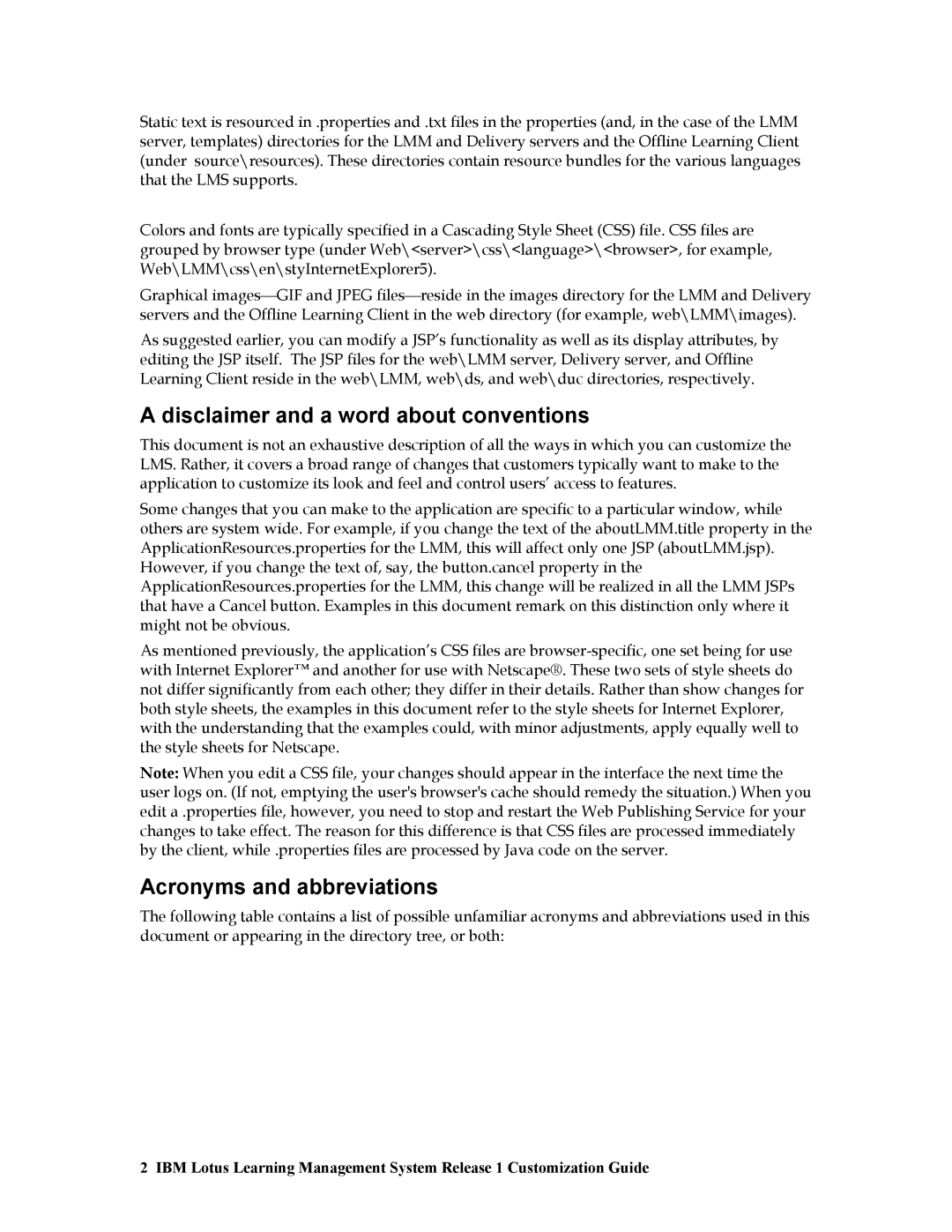Static text is resourced in .properties and .txt files in the properties (and, in the case of the LMM server, templates) directories for the LMM and Delivery servers and the Offline Learning Client (under source\resources). These directories contain resource bundles for the various languages that the LMS supports.
Colors and fonts are typically specified in a Cascading Style Sheet (CSS) file. CSS files are grouped by browser type (under Web\<server>\css\<language>\<browser>, for example, Web\LMM\css\en\styInternetExplorer5).
Graphical imagesGIF and JPEG filesreside in the images directory for the LMM and Delivery servers and the Offline Learning Client in the web directory (for example, web\LMM\images).
As suggested earlier, you can modify a JSP’s functionality as well as its display attributes, by editing the JSP itself. The JSP files for the web\LMM server, Delivery server, and Offline Learning Client reside in the web\LMM, web\ds, and web\duc directories, respectively.
A disclaimer and a word about conventions
This document is not an exhaustive description of all the ways in which you can customize the LMS. Rather, it covers a broad range of changes that customers typically want to make to the application to customize its look and feel and control users’ access to features.
Some changes that you can make to the application are specific to a particular window, while others are system wide. For example, if you change the text of the aboutLMM.title property in the ApplicationResources.properties for the LMM, this will affect only one JSP (aboutLMM.jsp). However, if you change the text of, say, the button.cancel property in the ApplicationResources.properties for the LMM, this change will be realized in all the LMM JSPs that have a Cancel button. Examples in this document remark on this distinction only where it might not be obvious.
As mentioned previously, the application’s CSS files are
Note: When you edit a CSS file, your changes should appear in the interface the next time the user logs on. (If not, emptying the user's browser's cache should remedy the situation.) When you edit a .properties file, however, you need to stop and restart the Web Publishing Service for your changes to take effect. The reason for this difference is that CSS files are processed immediately by the client, while .properties files are processed by Java code on the server.
Acronyms and abbreviations
The following table contains a list of possible unfamiliar acronyms and abbreviations used in this document or appearing in the directory tree, or both:
2 IBM Lotus Learning Management System Release 1 Customization Guide
